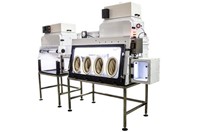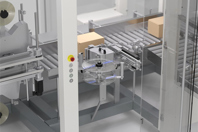INSIGHTS ON QUALITY CONTROL
-
Don't Let Seals Break Your Batch: A Risk-Based Approach To Column Maintenance
Optimize biopharmaceutical manufacturing by implementing risk-based seal maintenance. Tailor replacement protocols using data and advanced monitoring for enhanced efficiency and compliance.
-
Common Tablet Defects And The Importance Of Blending
Learn to minimize tablet defects like picking, sticking, and capping. This webinar explores common issues and the critical role of blending in achieving quality tablets.
-
Contamination Control Strategy With QRM Principles
Contamination Control Strategies (CCS) have long been a main concept, but advancing requirements and regulatory expectations create a challenge. Learn how to be effective and compliant with your CCS.
-
Quantitative Determination Of Amorphous And Crystalline Drug In Polymer Microspheres
Biodegradable polymer microspheres control drug release through crystalline and amorphous properties, analyzed using DSC, MDSC, and TGA to determine composition and stability for precise delivery.
-
Expanding Capabilities In QC Analyses With Advanced LC Detection11/26/2024
Today's quality control (QC) labs need instruments that can accurately take on a wide range of tasks. Discover a system that allows QC labs to enhance their capabilities and achieve various goals.
-
Monitoring Microbial Contamination Of Mammalian Cell Cultures2/21/2025
Mammalian cells are widely used to produce complex processed molecules. Explore a system that effectively detects microbial contamination in mammalian cell cultures and utilizes a newly formulated lysis buffer.
-
Digitalizing Pharma Control Strategies: A Roadmap1/24/2025
Digitalizing control strategies in pharmaceutical manufacturing enhances product quality, compliance, and efficiency, leveraging data-driven approaches like QbD, and digital CPV for optimized processes.
-
Utilizing A Stepwise Approach For Nitrosamine Risk Mitigation5/15/2025
Insights and case studies demonstrate how a tailored, stepwise testing approach can effectively detect, quantify, and control nitrosamine impurities while maintaining cost efficiency.
-
From Day One Success To Everyday Improvement: The OR → OE Continuum11/24/2025
Bridging the gap between initial startup and long-term sustainability requires a unified strategy. Learn to transform early readiness metrics into a durable operating system that drives continuous performance improvements.
QUALITY CONTROL SOLUTIONS
-
LIGHTHOUSE’s FMS-Water Activity Analyzer measures the water activity (% RH) of drug product samples.
-
Explore chromatography methods for sample preparation, residual solvent, and impurity analysis, critical steps for Active Pharmaceutical Ingredient (API) quality control.
-
Integrated Glovebox and Hybrid Isolator for HPAPI Processing designed to provide personnel protection while working with powder substances.
-
The K.Pak Solution provides topload case packing for your cartons or product with smooth and accurate handling. Informative and easy-to-use operator interfaces connect you to the process. Quality control is ensured through optimized integration with line management and serialization systems. Simple integration between Körber handling, packaging, inspection, and software solutions makes it easy for you to create the ideal packaging line.
-
For use in pharmaceutical, chemical, biological, and toxicological laboratory settings. Specifically designed to provide maximum containment for balance applications. The opening of the enclosure has uniquely designed acrylic airfoils that allow a smooth turbulence-free airflow that prevents balance fluctuation. Weigh down to 5 places without fluctuations or loss of product. The work surface is black for easy powder detection, constructed of tough, chemically resistant phenolic resin, and has a dished bottom for containing spills. Enclosures feature an ergonomic, energy efficient design with angled front for worker comfort.














